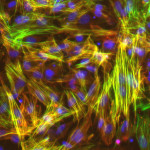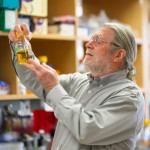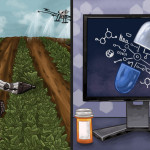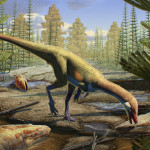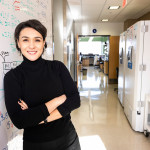Category Science & Technology
Flying High, Virtually
There’s a growing student interest in aerospace engineering, as well as strong career prospects in the aerospace industry. Enter: A state-of-the-art flight simulator, housed in the College of Engineering’s Flight Simulator Laboratory.
UW–Madison researchers find hidden genetic clues upping cardiovascular disease risk
Understanding how the change in the genome increases risk for CAD is a step toward potentially preventing its damaging effects and perhaps one day developing therapeutic strategies to block the risky changes in arteries.
Computer Sciences capstone prepares to scale experiential learning for students
It’s March 10, and mid-semester presentations are underway in the Computer Sciences capstone course. Dressed in textbook business casual, senior Bill Zhu is addressing 100…
UW Tech Exploration Lab student projects highlight innovation, emerging technologies
Bold ideas, creative problem solving and community impact were at the heart of 24 student projects launched this past semester at the Tech Exploration Lab.
The real costs of research funding cuts
UW–Madison could lose tens of millions of dollars in annual research support due to a proposed change in federal funding. But what’s really at stake? The university’s ability to advance life-saving research and innovation.
UW biochemists engineered a poplar tree that produces a high-demand industrial chemical. It was a surprise discovery only made possible by sustained investment in research.
Professor Brian Fox has engineered a genetic alteration to poplar trees to help them produce an industrial chemical commonly used as a preservative and an ingredient for synthetic fibers.
UW–Madison chemistry professor Martin Zanni elected to National Academy of Sciences
Only 120 American and 30 international scientists are elected to the academy each year for what the academy describes as their distinguished and continuing achievements in original research.
A UW biochemistry researcher is studying effective treatments for the next pandemic. Federal funding changes are slowing the work.
UW–Madison biochemistry professor Robert Kirchdoerfer is studying the structure of coronaviruses like COVID-19 to better understand how they work and to help develop drugs that protect against them.
Beyond the weather forecast: 5 ways UW satellite technology helps save lives
The University of Wisconsin–Madison may be the birthplace of satellite meteorology, but scientists on campus have never stopped developing new ways for space-based instruments to protect and improve the lives of people back on Earth.
AI, data science and the transformation of scientific research: A primer
The pace of technological advancement in AI and data science can be overwhelming. Here are 10 things to know about the two closely related yet distinct fields that are driving research and innovation in one of Wisconsin's key industries: agriculture.
Remembering Professor Emerit Ann Palmenberg, renowned leader in virology
Enthusiastic, jovial and persistent, Palmenberg rarely did anything halfway, at work or at home. She made it her mission to find ways to connect with everyone she met — and if that meant an opportunity to share the coolest thing she did in the lab that week, all the better.
UW–Madison researchers win prestigious Sloan fellowships
UW–Madison’s 2025 Sloan Fellows are James Roberts Crall, assistant professor of entomology, and Sharon Yixuan Li, assistant professor of computer sciences.
New discovery on how plants detect light and grow could result in more resilient crops
UW researchers isolated the effects of certain photoreceptors through genetic manipulation editing and photographed the growth of tiny sprouting seedlings with highly sensitive cameras.
Dinosaurs roamed the northern hemisphere millions of years earlier than previously thought, according to new analysis of the oldest North American fossils
A newly described dinosaur whose fossils were uncovered by UW paleontologists is challenging the existing narrative with evidence that the reptiles were present in the northern hemisphere millions of years earlier than previously known.
Project to explore enzyme behind early evolution of life on Earth
A team of scientists at UW–Madison led by bacteriology professor Betül Kaçar will explore the paleoenvironments and ancient history of Earth by bridging paleontology, artificial intelligence, synthetic biology and evolution.
Threat of abrupt mortality events keeps endangered monkey population at risk, despite decades of growth
Researchers hope their work eventually could inform conservation policies that might improve habitat quality management or create habitat corridors between isolated populations of the muriquis.
UW researchers find previously unknown links between microbial bile acids and the risk of colon cancer
A team of UW–Madison scientists have uncovered that bile acids produced by the liver to help digest food may affect our risk for developing colon cancer.
New tool makes quick health, environmental monitoring possible
Vatsan Raman, who has received a provisional patent for this work, sees broad applications for the technology his lab developed, including field tests that identify pollutants in local water sources in minutes and at-home tests that track health indicators.


